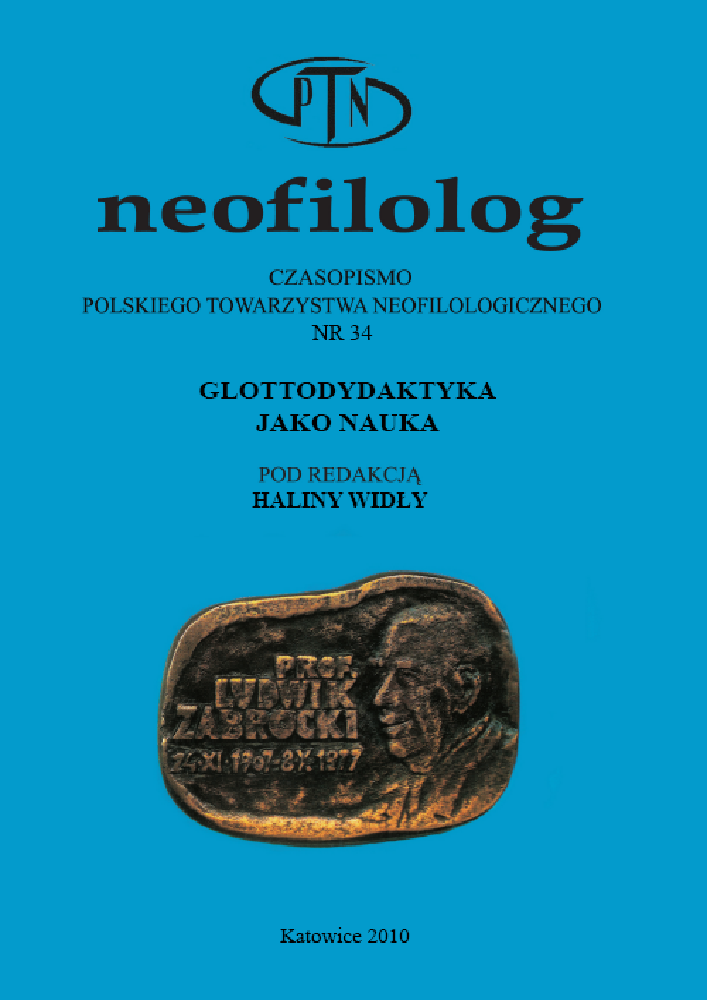Abstrakt
Numerous studies conducted during language lessons aim at gaining more knowledge about classroom interaction and its relationship with the learning and teaching processes. Early research concerning classroom interaction involved quantitative methodology and was based on some predetermined sets of categories used for coding specific classroom behaviours. However, such an analysis is not sufficient since it does take into consideration whole stretches of the context in which the utterance is produced and does not allow judgements connected with the classroom atmosphere to be made. One way of dealing with these problems is to employ qualitative methods. Recently, there is another tendency in research methodologies, namely, to use a combination of quantitative and qualitative studies (mixed methods research). The article presents an example of an interaction analysis conducted in foreign language classrooms with the help of mixed methods research, which allowed a better understanding of the phenomena that take place during a foreign language lesson.
Bibliografia
Bellack, A. A., Hyman, R. T., Smith, F. L. i Kliebard, H. M. 1966. “The Language of the Classroom”. Final Report, USOE cooperative Research Project, No. 2023. New York: Teachers College, Columbia University.
Bowers, R. 1980. Verbal Behaviour in the Language Teaching Classroom. Praca doktorska, Uniwersytet w Reading.
Brown, G. 1975. Microteaching. London: Methuen.
Dörnyei, Z. 2007. Research Methods in Applied Linguistics. Oxford: Oxford University Press
Dunkin, M. J. i Biddle B. J. 1974. The Study of Teaching. Holt, Rinehart and Winston, Inc., USA.
Flanders, N. A. 1964. „Some relationships among teacher influence, pupil attitudes, and achievement” (w) Contemporary Research on Teacher Effectiveness (red. B. J. Biddle i W. J. Ellena). New York: Holt.
Flanders, N.A. 1970. Analyzing Teacher Behaviour. Reading, Mass.: Addison-Wesley.
Lazaraton, A. 2005. „Quantitative research methods” (w) Handbook of Research in Second Language Teaching and Learning (red. E. Hinkel). Mahwah, N.J.: Lawrence Erlbaum.
Łęska, K. 2008. Teachers’ Use of Interaction Patterns in a Foreign Language Classroom and Gains in Students’ Oral Fluency. Częstochowa: Wydawnictwo Wyższej Szkoły Lingwistycznej.
Malamah-Thomas, A. 1987. Classroom Interaction. Oxford: Oxford University Press.
McCarthy, M. 1991. Discourse Analysis for Language Teachers. Cambridge: Cambridge University
Michell, R. i Parkinson, B. 1979. „A systematic linguistic analysis of the strategies of foreign language teaching in the secondary school”. Artykuł z konferencji BAAL: mimeo.
Moscowitz, G. 1971. „Interaction analysis: A new modern language for supervisors”. Foreign Language Annals 5: 211 – 221.
Sinclair, J. McH. and D. Brasil. 1982. Teacher Talk. Oxford: Oxford University Press.
Sinclair, J. McH. and R. M. Coulthard. 1975. Towards an Analysis of Discourse. Oxford: Oxford University Press.
Ullmann, R. i Geva, E. 1984. „Approaches to observation in second language classes” (w) Language Issues and Education Policies (ELT Documents 119) (red. C. J. Brumfit). Oxford: Pergamon Press.
Licencja
Prawa autorskie (c) 1970 Krystyna Łęska

Utwór dostępny jest na licencji Creative Commons Uznanie autorstwa – Bez utworów zależnych 4.0 Międzynarodowe.
Przedstawiany utwór (artykuł) upubliczniany jest na podstawie umowy z autorem i na licencji Creative Commons Attribution-NoDerivatives 4.0 International (CC BY-ND 4.0).
Użytkownicy mają obowiązek podania wraz z rozpowszechnionym utworem, informacji o autorstwie, tytule, źródle (odnośniki do oryginalnego utworu, DOI) oraz samej licencji;
- bez tworzenia utworów zależnych,
- utwór musi być zachowany w oryginalnej postaci.
Uniwersytet im. Adama Mickiewicza w Poznaniu zachowuje prawo do czasopisma jako całości (układ, forma graficzna, tytuł, projekt okładki, logo itp.).
